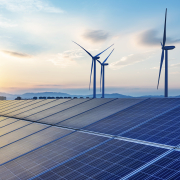Dominion Threatens to Pull Out of Major Offshore Wind Farm
By Christian Roselund
Dominion Energy Virginia has warned that it will not move forward with a planned 2.6-gigawatt offshore wind project if a performance guarantee imposed by the state of Virginia is not waived. The Virginia Corporation Commission, in its approval of a rate rider for the 2.6-gigawatt Coastal Virginia Offshore Wind (CVOW) Commercial Project, had earlier stipulated that Dominion must compensate its customers for any shortfall of less than 42% of rated output of the project over a 3-year period.
In a 22 August 2022 filing, Dominion warned that such a stipulation was “untenable.” It also argued that similar requirements were not placed on other energy generation projects, and that fluctuations in output would be beyond the company’s control.
Regardless of the outcome of this case, offshore wind continues to progress in the United States. In its most recent Offshore Wind Market Report, the U.S. Department of Energy included CVOW among more than 20 gigawatts of offshore wind projects off the Atlantic Coast that have reached the permitting stage. Currently two projects totaling 932 megawatts are under construction, and the United States’ total operational offshore wind capacity is only 42 megawatts at two sites.
Source: Petition of Virginia Electric and Power Company for Limited Reconsideration (Virginia State Corporation Commission) News coverage: Dominion threatens to abandon 2.6-GW offshore wind farm over performance guarantee (UtilityDive)





